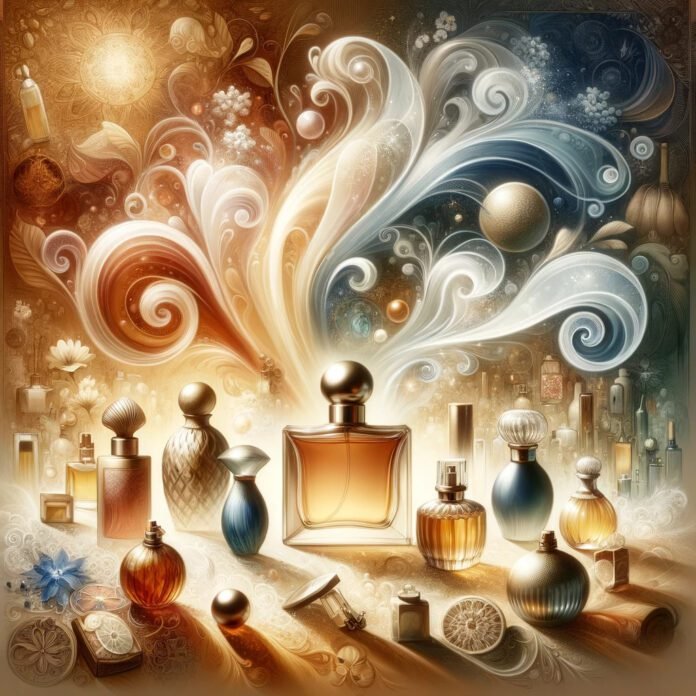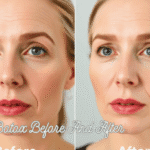Last Updated on July 19, 2024 by Asfa Rasheed
In the intricate tapestry of fragrances that envelops our world, perfumes stand out as both a testament to personal style and a whisper of nature’s indefinable beauty. Among the myriad scents, the cherry vanilla perfume encapsulates a unique allure, blending the tartness of cherries with the creamy sweetness of vanilla. This fragrance, both seductive and comforting, serves as a perfect introduction to the enchanting realm of perfumes. As we navigate through this olfactory journey, we’ll explore the essence of perfumes, their historical significance, and the art of selecting the perfect scent that resonates with your spirit and style.
Table of Contents
The Historical Essence of Perfumes
Perfumes have been a part of human civilization for thousands of years, evolving from simple incense and balms to complex scent compositions that capture the essence of countless ingredients. Ancient Egyptians were among the first to incorporate perfumes into their culture, using them in religious ceremonies and for personal adornment. The Romans and Greeks later adopted and expanded the use of fragrances, making them an integral part of their bathing rituals and social gatherings. By the Middle Ages, perfumes had spread throughout Europe, becoming a symbol of status among the nobility. The 19th century marked a significant turning point with the synthesis of aromatic compounds, leading to the creation of modern perfumery as we know it today.
The Science of Scent
At the heart of perfumery lies the science of scent. Perfumes are crafted by blending essential oils, aroma compounds, and solvents to create a harmonious scent profile. These compositions are categorized into three main notes:
- Top Notes: Also known as the head notes, these are the lightest scents and the first ones you smell upon application. They evaporate quickly, setting the stage for the heart notes. Citrus and herbal scents are common top notes.
- Heart Notes: The core of the fragrance, heart notes emerge just before the top notes dissipate. They are more mellow and make up the main body of the perfume. Floral or fruity scents, like the cherry in cherry vanilla perfume, are often found here.
- Base Notes: These are the heaviest scents and the last to develop. Base notes provide depth and longevity to the fragrance, with vanilla being a popular choice in many compositions for its rich, comforting presence.
Understanding these notes is essential in selecting a perfume that evolves beautifully on your skin throughout the day.
Selecting Your Signature Scent
Finding your signature scent is a personal journey, a quest to find the fragrance that best expresses your identity and mood. Consider the following tips to navigate the world of perfumes:
- Sample Widely: Explore a variety of scents to understand your preferences. From the bright, fresh notes of citrus to the deep, evocative tones of wood and musk, the spectrum of fragrances is vast.
- Consider the Occasion: Your choice of perfume can vary depending on the time of day, season, or event. Light, airy scents are perfect for daytime wear, while richer, more complex fragrances suit evening occasions.
- Understand Your Scent Profile: Pay attention to how a perfume interacts with your skin’s natural oils. A fragrance that smells heavenly on a blotter or another person may not have the same allure when worn by you.
- Give It Time: A perfume evolves on your skin, revealing different notes over time. Apply a small amount and wait for it to develop fully before making a decision.
- Quality Over Quantity: Invest in high-quality perfumes with pure, fine ingredients. They tend to have better longevity and a more distinct, nuanced fragrance profile.
The Art of Wearing Perfume
Applying perfume is an art that enhances the fragrance’s performance and your overall sensory experience. Here are some tips for getting the most out of your scent:
- Pulse Points: Apply perfume to pulse points like your wrists, neck, and behind your ears. The warmth of these areas helps diffuse the fragrance across your body.
- Don’t Rub: Rubbing your wrists together after applying perfume can break down the molecules, altering the scent. Instead, let the fragrance dry naturally.
- Layering: Enhance the longevity and intensity of your perfume by layering it with complementary scented body products, such as lotions or oils.
- Storage: Preserve the integrity of your perfumes by storing them in a cool, dry place away from direct sunlight and temperature fluctuations.
















